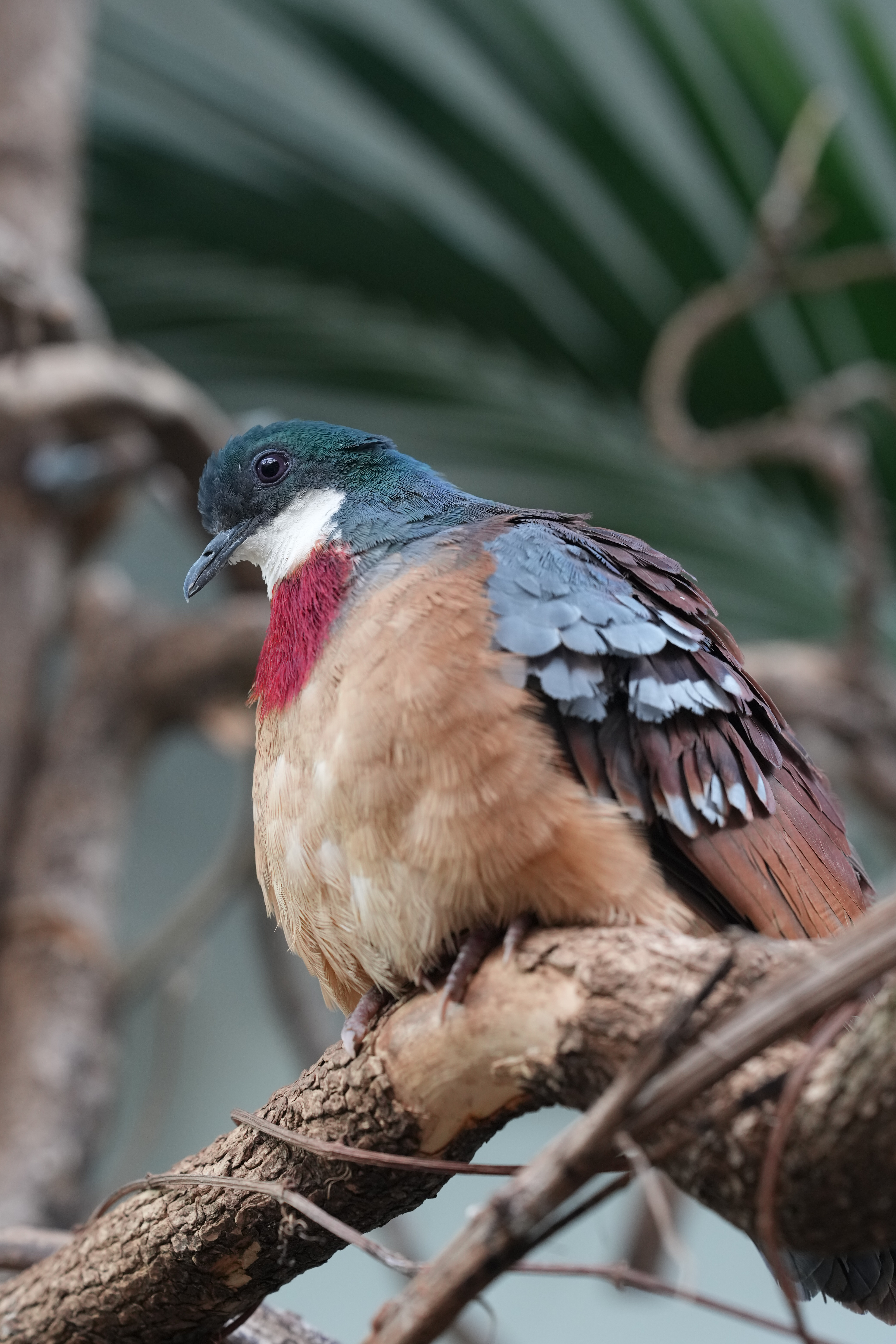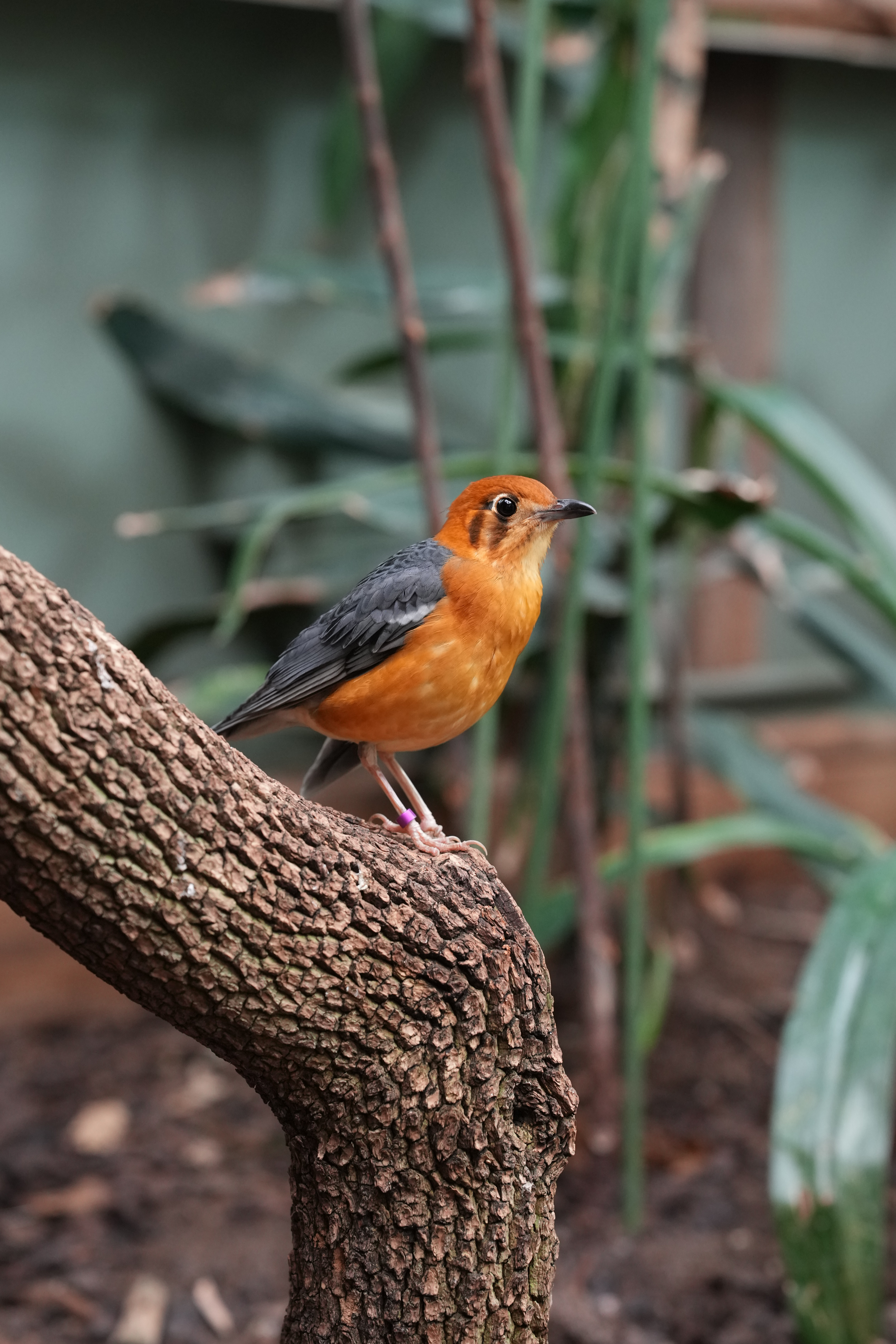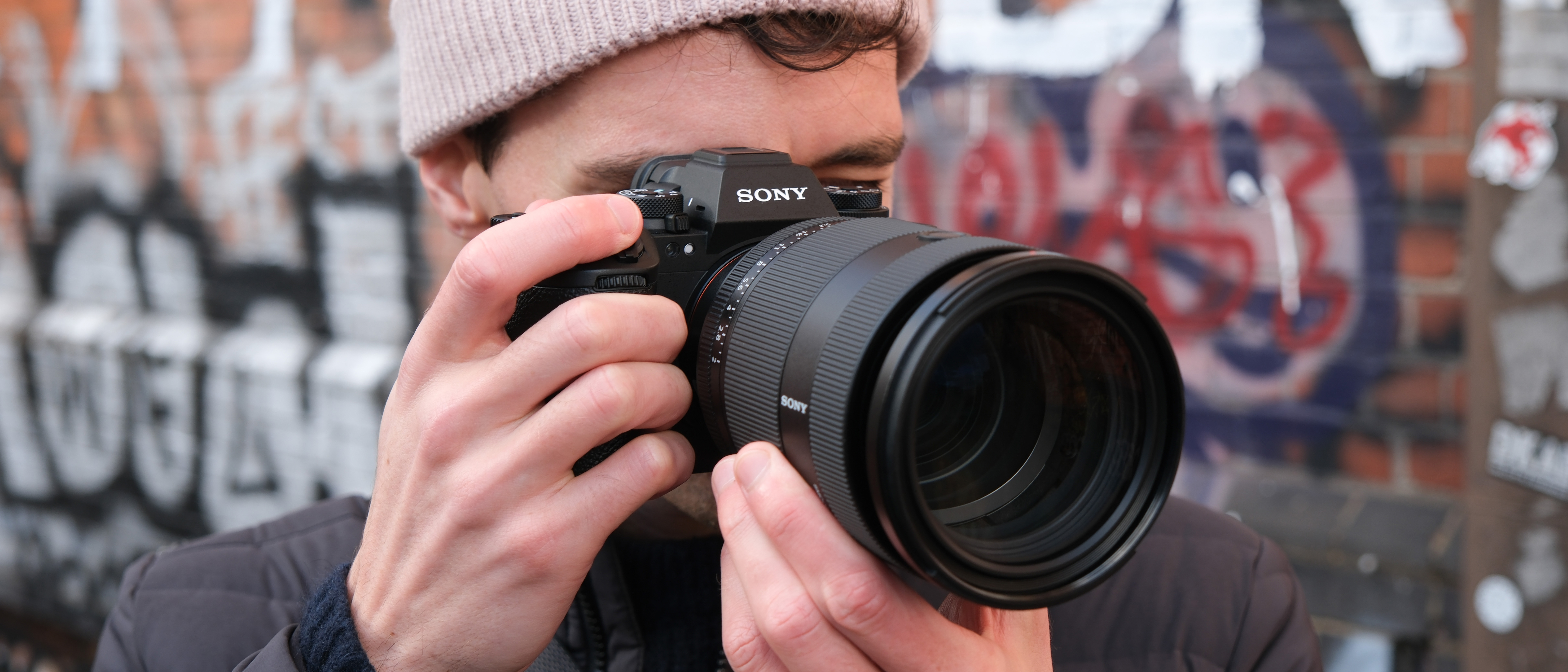Digital Camera World Verdict
The Sony A1 II is a predictable yet solid sequel, keeping the flagship fresh with mostly minor updates already seen in other models. Image quality and stabilization remain top-notch, but the standout is the auto-subject detection autofocus, making it faster and more intuitive than ever to pick out different subjects. However, its steep price is harder than before to justify against rising competition offering similar features.
Pros
- +
Super-quick AF with Sony’s latest subject recognition
- +
Auto subjects autofocus is a game-changer for Sony shooters
- +
Image quality is phenomenal
Cons
- -
Very expensive
- -
Other cameras in Sony’s lineup might be more suitable
- -
Not the most significant update
Why you can trust Digital Camera World
Sony's A1 II is the latest flagship camera from Sony, succeeding the original A1 released three years prior – and the first Alpha camera released in over a year. While a hugely impressive camera if you take a look at its spec sheet – continuing the A1 brand of being a camera that is just really good at absolutely everything. I also find it, on the whole, an all too predictable update.
The A1 II maintains many killer features from its predecessor, including the excellent 50.1MP sensor and adds a few new ones, but it lacks a little pizzazz with showstopping new features. The majority of its most significant updates, while undeniably amazing technologies have already been seen in other Sony models – most notably last year's Sony a9 III.
Except for one biggie that is. There is one standout feature that I am incredibly excited by, and is set to be a game-changer for Sony autofocus going forward – and that is the world’s first full-frame auto-subject detection. While this tech debuted on the APS-C Fujifilm X-S20, for the first time this enables simultaneous identification of multiple subjects on a full frame camera without manual selection.
But can these updates collectively put the Sony A1 II back on top of the pile of best professional cameras?

Sony A1 II: Specifications
| Sensor | 50.1MP BSI Stacked CMOS |
| Processor | BionzXR + AI Processing Unit |
| Image Stabilization | up to 8.5 stops |
| Max Burst Speed | 30fps with AF/AE up to 153 images (compressed RAW 14-bit) |
| Video | 8K/30p 4:2:0 (oversampled 8.6K), 4K/60p, 4K/120p (1.1x crop) |
| Viewfinder | 0.94m dot OLED, 100% coverage, 0.9x magnification |
| Monitor | Row 6 - Cell 1 |
| Battery | NP-FZ100 |
Sony A1 II: Price
The Sony A1 II is still inexplicably expensive, launching at $6,499.99 / £6,299.99 – which is the same price as the first generation in the US, although slightly cheaper than the original A1 in the UK, so that's something.
Compared to the competition, I think the Canon EOS R5 Mark II at $4,299 / £4,499 is much more of a direct rival than the sports-oriented EOS R1 – which I’d peg rather as the biggest rival to the Sony a9 III. Nikon also has its excellent Nikon Z8 for $3,999 / £3,999 which goes nearly toe-to-toe with the A1 II.
These rival cameras offer nearly the same resolution as the 50.1MP sensor in the A1 II – 45MP for the Canon and 47.5MP for the Nikon, and there really isn’t much else to separate them – the EOS R5 II even takes on Sony’s auto subjects recognition mode with its very cool eye-AF controls.
So don’t ask me why the Sony A1 II is so much more expensive than either of these models but if you are interested in the A1 II, it's likely you’re already locked in with a lot of pricey Sony G Master lenses, so you’ll probably have to come to terms with it rather than jumping ship.
Sony A1 II: Design & Handling
Sony has long homogenized the style and layout of its Alpha series cameras, and whether you use the a7 IV, the a9 III, or the A1 II, you’re experience will be largely the same – which makes bouncing between different models incredibly easy if you often need to carry a second body.
And at ~792g (with a battery, 2x SDs, and a strap), carrying the A1 II isn’t much of a chore, the improved molded grip shape is more rounded, and I found I could actually get all four fingers on the grip, which is a rarity with most mirrorless cameras. I found the A1 II very comfortable to hold one-handed – even when I had the monster new 28-70mm lens attached, although I did need to take a few breaks. If you do find you need more grip there is an optional VG-C5 vertical grip available that will take two NP-FZ100 batteries and offers additional controls, however, at $400 this adds another expense to an already very expensive camera.

All-in-all there is an incredible, almost overwhelming amount of control over the A1 II. The camera follows the exact same button and dials layout as last year’s A9 III, and is only a very minor departure from how things are laid out on the original A1.
The most significant changes are that the movie and S&Q modes have been moved from the mode dial to a three-way switch underneath the mode dial – this is protected with a lock so you don’t accidentally nudge yourself between modes, but makes switching between modes much faster. Also, the dial in the rear left has dropped its exposure compensation markings as the dial can be customized to other functions if desired – although is still set by default for exposure compensation.
For other controls on the A1 II, you have a second customizable dial up top, one on the rear of the camera that also functions as a D-pad, and a dial on the front grip. Alongside the mode dial, there are two more (lockable) dials to control burst speeds as well as focus mode. There is also a grand total of five customizable buttons spread around the camera, as well as an AF-ON, exposure lock button, and a start/stop record button. Finally, there is a joystick on the rear for navigating menus as well as AF points when shooting.

Sony has also made a few changes to the port layout in response to feedback it received from the previous A1 model as well as its most recent rearrangement for the a9 III. You’ll still find an ethernet port, multi-controller, USB-C, full-sized HDMI, headphone jack, and microphone jack, but Sony claims this new layout should make it easier to access different ports when multiple are in use.
In my line of work, it's rare I need to use all these ports, especially simultaneously, so I will take Sony’s word for it here, but I can attest the ports themselves are very easy to access, with moisture-tight rubber seals that are easy to pop open with a fingernail – and the port covers also hold themselves open rather than flapping around and getting in the way, which is very welcome.

Speaking of getting in the way – the rear LCD monitor has also benefitted from an upgrade to the 4-axis multi-angle monitor from the A9 III – which in layman's terms means that it has an additional axis to push the monitor further out from the camera so the screen can be fully rotated without clashing with any of the wires extending from the ports on the side, and avoids being shaded by the eyepiece for the EVF. I found the hinge mechanism to be incredibly solid here, holding the screen in any position, but without so much resistance that I couldn’t flip the screen in, out, or all the way around with only one hand.
The 9.4m dot OLED viewfinder is really nice to use, if you haven’t seen the pattern so far, it's also the same one that debuted in the A9 III last year. It is clear and easy to compose with, with one hundred percent coverage.

Sony A1 II: Performance
Let's talk about autofocus – among all the quality of life improvements in the A1 II over the previous generation, it's autofocus that has seen the biggest leap forward. The A1 II finally catches up to other Sony cameras with the latest algorithms that not only speed up focusing, but now can recognize human bodies, faces, and eyes, as well as animals, birds, insects, and several types of vehicles. There is nothing really new here, as we have seen all this before – however – the a1 II does bring one absolutely game-changing new feature for Sony – auto subject detection.
The Sony A1 II becomes the first camera in Sony's lineup to be able to recognize all the different subjects I listed above, but in one mode – no more flicking between different subjects in the settings (unless you want to limit the recognition to one particular subject that is). Just spotted an elusive creature? Forget having to waste valuable seconds changing to animal autofocus, just point and shoot.
The auto setting works really well, with the camera easily jumping between different subjects with the exact same accuracy I would get in each specific recognition mode. The auto mode did sometimes get a little tripped up when it came to multiple subjects in one frame. On one occasion I tried to take a full-length portrait of a person, but the camera was insistent on focusing on a bouncy dog that was next to them rather than their face. And in a wide group shot the camera also kept jumping focus to passing cars rather than the smaller static human subjects. But these were rare and fairly minor inconveniences, and I am sure something that Sony can tune with time.
With so many Sony cameras sharing the same BionzXR and AI co-processor setup, this is a killer feature that, Sony should really roll out to as many cameras as possible. Pure speculation for now, but cross your fingers and keep an eye on those firmware updates.

The photo quality from the Sony a9 II is just exceptional – paired with the new Sony FE 28-70mm f/2 lens photos were crystal clear and pin sharp. Shooting the London Eye from nearly half a mile away on Westminster Bridge, I can have almost identified the people in the pods. Although with the same sensor as the previous model, if upgrading you won’t notice a difference – and if image quality is really essential, Sony does also offer an even higher resolution camera with the A7R V.
The colors out of the A1 II are good, I don’t love Sony’s standard color science as much as other brands, but images are very accurate, if lacking a little punch. However Sony does offer several set image profiles to change the look of your JPEGs up, or you can fine-tune your own.
The A1 II offers up to 8.5 stops of in-body image stabilization, which is a new personal best for Sony, besting the a9 III by another half-stop. For still images, the IBIS is outstanding – in my testing, I found that I could comfortably use the camera in very low light without real concern. I walked through London’s Oxford Street to photograph the Christmas lights at night, and despite the jostling and bumps from other shoppers on the busiest street in the country and the fast pace I was trying to get the shots, they were still incredibly sharp.

For video, the IBIS made a huge difference in holding static shots steady, as well as for slow pans – both of which were not the easiest to hold steady handheld due to the combined weight of the A1 II and 28-70mm lens. When I tried the IBIS during heavier movement however there were some jello-like effects on the footage, and although active stabilization does cut some of this out, it does so at the penalty of a crop to your final footage. As is my advice for most cameras – if you intend on shooting and moving with the a9 II, I would invest in a good gimbal.
Video quality is excellent, the camera can record in up to 8K, although I do question how many people really need 8K video as the files are both monstrous to store and work with. I filled my 128GB card in around 19 minutes, and trying to edit the files even on a brand new M4 Pro MacBook was a struggle.
The better news is – 4K from the A1 II is sublime, especially when shot in Sony’s S-Cinetone, which gives really nicely graded ready-to-use footage straight out of the camera. You can also add your own LUTs directly to the camera with up to 16 slots, and there is the option to record in S-Log for grading later and pulling out the maximum dynamic range. But there is no form of internal RAW codec on the A1 II, which is a shame, but also not unexpected from Sony.

One of my small issues is the Sony A1 II being such a jack-of-all-trades kind of camera. There is no taking away from the fact that it is a phenomenal all-round camera, and if you cover a lot of different and varied areas professionally, then maybe the A1 II is the perfect camera for your needs. However, there are a lot of other models in Sony’s lineup, many of which do a better or similar job at specific types of photography – for considerably less money.
Take the Sony a7R V, if you are a landscape or product photographer and want the absolute best in image quality then consider that 64MP camera. If you care about video, then the a7R V can also record in 8K, and pretty much any recent Sony model can provide equal quality 4K. And if you are considering spending this much money, then the Sony A9 III with its global sensor and ludicrous shutter speeds might be best for fast subjects like sports or wildlife. If you are considering the A1 II, then you should be asking yourself if you need everything the A1 II has to offer.

Sony A1 II: Sample Images
All these photos were taken using the A1 II and the brand new Sony FE 28-70mm f/2 G Master lens. The weird and changeable November weather in London ensured the camera was tested in all sorts of natural light – with the A1 II being incredibly consistent between rain and sun spells. Low-light shots are incredibly clear, Sony has done a great job with noise reduction in JPEGs with even shots at night being smooth.
















Sony A1 II: Lab results
For our lab data comparison we compared the A1 II to its A7R V stablemate, to see how the two compare, as well as the best single-gripped mirrorless cameras that Canon and Nikon have to offer: the EOS R5 II, and the Z8.
Resolution (line widths/picture height):

Resolution is measured using standardized text charts which give results in line widths / picture height, which is independent of sensor size.
Unsurprisingly, the 61MP A7R V does best in our resolution test, but the 50.1MP A1 II isn't that far behind, and it narrowly beats the Canon and Nikon competition at most sensitivity settings.
Dynamic range (EV):

Dynamic range is a measure of a camera's ability to record extreme brightness ranges and still retain detail in the brightest and darkest parts of the scene. It's measured in EV (exposure values, or 'stops').
The A1 II captures excellent dynamic range throughout the tested sensitivity range, decisively beating the EOS R5 II and Z8, and coming out just ahead of the A7R V.
Signal to noise ratio (decibels):

This test compares the amount of random noise generated by the camera at different ISO settings as a proportion of the actual image information (the 'signal'). Higher values are better and we expect to see the signal to ratio fall as the ISO is increased.
Once again, the A1 II lives up to its flagship status (and its price tag!) by producing the cleanest, least noisy images in our test group, and by some margin. The gap between it and the A7R V is especially noticeable, proving again that extra megapixels don't always improve image quality across the board.
Sony A1 II: Verdict
The Sony A1 II is altogether a fairly predictable sequel, mostly sourcing parts and features that we have already seen in Sony’s other bodies. However, it does keep Sony’s flagship fresh and up-to-date, as it was at risk of slipping against increased competition. It’s also a testament to how cutting-edge the original Sony A1 was that it only needs minor improvements to stay with the pack. Image quality remains exceptional, alongside Sony’s best ever in body image stabilization.
But the one big area of improvement where the Sony A1 II really makes me excited for the future – is autofocus. The auto subject recognition in the A1 II is unquestionably a game-changer for Sony’s autofocus. Sony’s AF is not only faster than ever (and it was already pretty darn fast), but is now is easier and more intuitive to focus in a range of situations.
It's just a shame that the A1 II remains so expensive. The first time around it was almost forgivable as it was the premium prestige product to show what Sony cameras were capable of, but now the rest of the industry has caught up with bodies that go to-to-toe with the A1 II, but for much less money, and it is the only real blemish against an otherwise incredible camera.
| Features | A minor update from the last version, but still enough improvements across the board to keep it top of the range. | ★★★★★ |
| Design | Tons of controls, and an improved grip make the camera more comfortable to hold. | ★★★★★ |
| Performance | Image quality, autofocus, IBIS, and video are all some of the best on any camera anywhere. | ★★★★★ |
| Value | Far too expensive compared to much cheaper but similarly specced competition. | ★★★★✩ |

✅ Buy it...
- If you are a top multi-disciplinary photographer who needs the best from their camera, then the A1 II offers the best of everything.
🚫 Don't buy it...
- If you don’t need the best of absolutely everything then you might find a camera in Sony’s range that suits your needs better – and for a lot less money.
Alternatives
Sony A7R V: this camera already offers so much of what the A1 II has – with an even higher 64MP megapixel sensor, as well as the same 8K and 4K video. The burst count is slower, so doesn’t make as good of a sports camera, and the camera doesn’t (yet) have full auto subject recognition. But at around half the price, does that really matter? Read the full review…
Canon EOS R5 Mark II: Canon’s latest flagship takes it to the A9 II on almost every front, with only a slightly lower resolution sensor, the photos are still exceptional, and like the Sony, the R5 II can do 8K video. I think Canon’s Eye-AF is also incredible (although perhaps not everyone agrees). Read the full review…

Gareth is a photographer based in London, working as a freelance photographer and videographer for the past several years, having the privilege to shoot for some household names. With work focusing on fashion, portrait and lifestyle content creation, he has developed a range of skills covering everything from editorial shoots to social media videos. Outside of work, he has a personal passion for travel and nature photography, with a devotion to sustainability and environmental causes.




